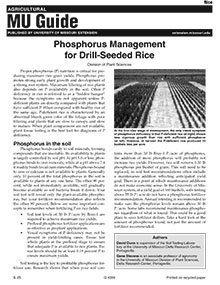Rules for Missouri Fourth-Class Cities - Page 14
New
Learn about the legal requirements for bidding processes in Missouri's fourth-class cities, including bid announcements, phone bids, and contracts.
Rules for Missouri Fourth-Class Cities - Page 17
New
Learn about conflict of interest laws for Missouri fourth-class city officials, including compensation limits, complaint procedures, and penalties for violations.
Rules for Missouri Fourth-Class Cities - Page 20
New
Outlines the disincorporation process for Missouri fourth-class cities, detailing petition requirements, election procedures, and trustee responsibilities.
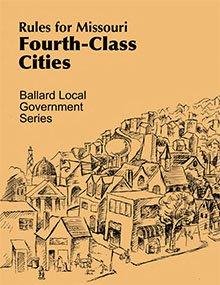
Rules for Missouri Fourth-Class Cities
New
Learn the essential rules and guidelines for governing Missouri fourth-class cities, including duties, meetings, taxes, and more.

Rules for Missouri Fourth-Class Cities - Page 3
New
Guidance on official oaths, term completion, vacancies, resignations, quorums, and voting procedures for Missouri fourth-class city officials.
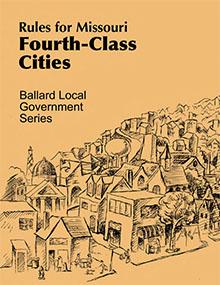
Rules for Missouri Fourth-Class Cities - Page 6
New
City clerk duties in Missouri's fourth-class cities: appointments, records, taxes, court roles, and administrative responsibilities.
Rules for Missouri Fourth-Class Cities - Page 9
New
Explains how fourth-class cities in Missouri can enforce ordinances through municipal or associate circuit courts.
Rules for Missouri Fourth-Class Cities - Page 12
New
Learn about Missouri's Open Meetings and Records Law, including public access requirements and procedures for closing governmental meetings.
Rules for Missouri Fourth-Class Cities - Page 15
New
Cities must establish personnel policies, maintain accurate records, and comply with wage laws, including compensatory time and overtime regulations.
Rules for Missouri Fourth-Class Cities - Page 18
New
Explore bond options for Missouri's fourth-class cities, covering general obligation and revenue bonds, voter requirements, interest rates, and loan terms.
Rules for Missouri Fourth-Class Cities - Page 21
New
This section outlines the process for fourth-class cities in Missouri to change their status, including eligibility and procedural steps.
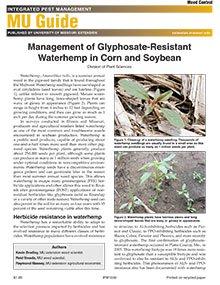
Management of Glyphosate-Resistant Waterhemp in Corn and Soybean
New
Effective strategies for managing glyphosate-resistant waterhemp in corn and soybean fields, including herbicide rotation and preemergence treatments.
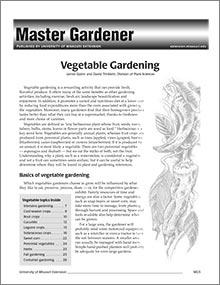
Vegetable Gardening
New $10
Vegetable gardening is a rewarding activity that can provide fresh, flavorful produce. It also offers the benefits of exercise, fresh air and landscape beautification. Learn to grow your own vegetables so you can eat fresh and save on groceries.
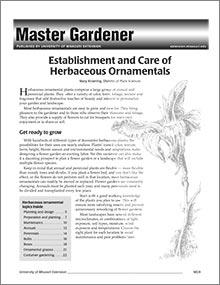
Herbaceous Ornamentals
New $10
Discover the beauty of herbaceous ornamentals—annuals and perennials that add color, texture, and fragrance to your garden with easy-growing versatility
Your Child’s Health and BMI
New
Learn how to interpret your child's BMI percentile and offers practical tips for promoting healthy eating, physical activity, and positive body image.

Soybean Diseases
Revised
Editor's note
The following abstract describes a publication that is only available as a downloadable PDF.
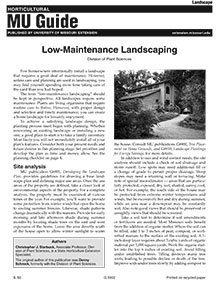
Low-Maintenance Landscaping
Reviewed
Create a beautiful, low-maintenance landscape with thoughtful design, proper plant selection, and easy-to-care-for features that suit your space and lifestyle.
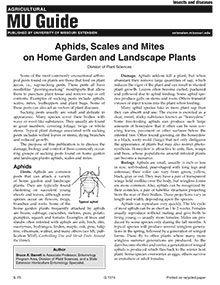
Aphids, Scales and Mites on Home Garden and Landscape Plants
Revised
Learn how to identify and control aphids, scales, and mites to protect your garden plants from damage and common pest-related issues.
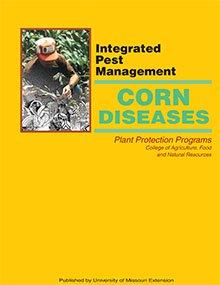
Corn Diseases
Revised
Editor's note
The following abstract describes a publication that is only available as a downloadable PDF.
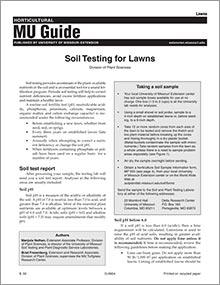
Soil Testing for Lawns
Reviewed
Soil testing helps determine nutrient levels and pH, guiding effective lawn fertilization and ensuring healthy turf growth.
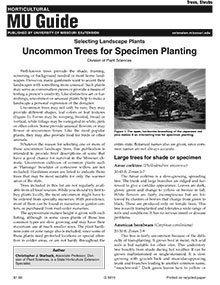
Selecting Landscape Plants: Uncommon Trees for Specimen Plantings
Reviewed
Check out some uncommon landscape trees that have a good chance for survival in the Missouri climate.

Mulches
Revised
Mulch conserves moisture, suppresses weeds, and enhances soil health. Choose materials like pine bark, leaves, or straw for optimal benefits. Apply 2–4 inches to maintain garden vitality.
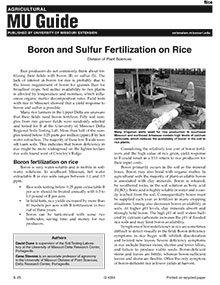

Grandparents as Caregivers — Common Questions
New
Learn how grandparents can navigate caregiving challenges, manage stress, find support, and build positive relationships with grandchildren.
